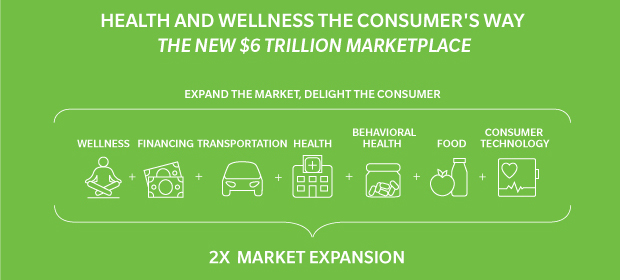In this latest installment, authors Tom Main, partner in Oliver Wyman’s Health & Life Sciences practice, and Adrian Slywotzky, partner emeritus, shift their focus from market forces to marketplace structure, and they detail the rise of “multi-chain ecosystems” as the dominant new business model. They describe how multiple industries are converging to shatter the old sick-care model and create a new consumer health, wellness, and better-living marketplace – one that is driven by consumer needs, not sick-care codes and plan design. The transformation mirrors what has already occurred in other marketplaces, as consumer-centric companies like Apple and Amazon forced reinvention by collapsing industries and rebuilding them on consumers’ terms. Now, it’s healthcare’s turn.

Whether you are an incumbent trying to define your role in the shifting landscape or a new entrant looking for an unequalled growth runway, the possibilities are vast. Welcome to the revolution.Tom Main Partner Oliver Wyman
What Health Market 2.0 Looks Like
Healthcare is in the midst of a dramatic transformation. The current $3 trillion sick-care marketplace is bending to consumer-centric pressures and morphing to accommodate consumer-tech, retail, and scientific advancements. What is emerging is a new, integrated market that blends sick care with health, wellness, and lifestyle. In Health Market 2.0, the focus is on prevention, and the system bridges health, medication management, nutrition, stress management, mobile services, smart homes, behavior change, and more. According to Oliver Wyman analysis, combining the current sick-care market with wellness and better-living products and services will create a new $6 trillion market, with more than $1 trillion in value redistributed to new health and wellness ecosystems:

Already, consumers have access to connected, “smart” solutions for diabetes, congestive heart failure, asthma, and a select number of neurological disorders. The companies behind these Health Market 2.0 offerings are not perpetuating the existing business model; they have set out to build something new and different, utilizing a next-generation business design that integrates multiple industries to create a new, converged marketplace.
The Marketplace Revolution highlights how the new borderless, multi-chain business design – which is dependent on partnerships and the convergence of previously disconnected value promises – can lead to a dramatically more effective marketplace and a vastly improved consumer experience. The paper expresses this succinctly through its 40/100 formula (40% better value and 100x improved consumer experience).
The new multi-chain ecosystems are focused on defined markets and opportunities that improve consumers’ lives. They bring the world to individuals on their terms, in their language and life context, and they all share three common design elements:






